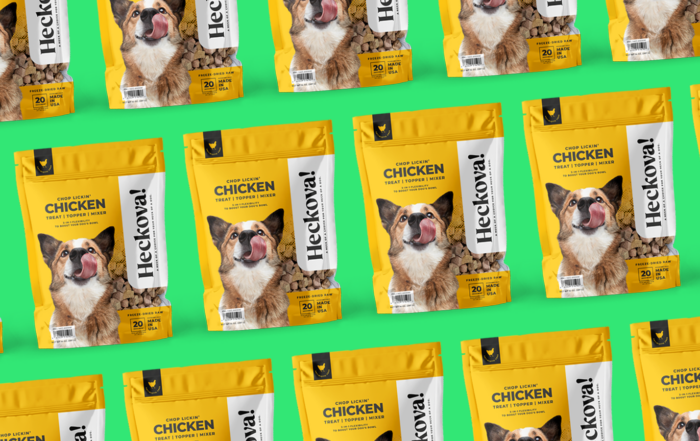For about a decade, Matt Adams’ heart didn’t feel quite right. At first, it was manageable. Then, his palms began to sweat, and he became more aware of his heartbeat, which grew more intense.
Worsening symptoms led him to the ER, where doctors said he had an abnormal heartbeat. After undergoing a procedure and taking medication, he still didn’t feel any relief. Adams, a regional sales manager for a medical device company, turned to Google to find a new physician and checked Reddit for better ways to manage his condition — efforts that helped lead to a second opinion.
“I started to really lean on the information from Reddit maybe even a little bit heavier than that from my previous doctor,” Adams says. By finding subreddits (topic-specific sections on Reddit) related to his health issues, “I was able to get information from medical device technologists that talked about pacing for my implantable cardio defibrillator. That was very effective for me.”
Many others are using the internet and social media forums like Reddit to seek and share health-related experiences and insights. Roughly 26% of millennials and 33% of Generation Z use social media to discuss an illness, according to a 2022 Patient Trendscoping study by Hall & Partners. The study also found that the trend isn’t exclusive to younger generations. In the U.S., nearly 60 million people are turning to social media for help with a chronic condition or more general healthcare information.
And while increased access to health information can lead people to improved diagnoses and getting the help they need, as in Adams’ case, the proliferation of social media influencers has its downsides.
During one 24-hour period, researchers from the University of Chicago analyzed the content on TikTok related to sinusitis. They found that 44% of the videos contained non-factual information. Among the videos with inaccurate content, nearly half came from “nonmedical influencers,” content creators with more than 10,000 followers who didn’t self-identify as medical professionals.
The need to bridge the gap between misinformation and education presents a key opportunity for health marketers. Not only do they have access to the evidence-based health information most beneficial to those seeking it, but they are also uniquely tasked as marketers to find novel ways to share it.
However, when it comes to social media, novelty and health marketing don’t often go hand in hand. Regulations can make it difficult for health marketers to embrace social media trends and produce the kind of engaging content that resonates with online audiences.
“Health marketers often feel stuck behind the red tape,” says Amanda Tanner, Senior Director of Account Management at Rise, a Quad agency. “But there are ways to follow the rules and innovate.”
1. Health marketers can piggyback on trending topics
On the TikTok app, users spend an average of nearly 24 hours each month watching, engaging with and posting videos. Content with health hashtags, such as #celiactok, #diabetestok and #sinustok, garners millions of views.
By following relevant condition-related hashtags, health marketers can spot trends ripe for their brand’s expertise, as those hashtags are likely to lead to highly circulated videos spreading misinformation about health conditions or their treatments. Brands can piggyback the right way by using their own channels to create and share branded videos that debunk myths or misleading content, using the same condition or symptom hashtags.
Tanner suggests that brands could even go one step further and engage with well-known health influencers to help create the branded videos. This builds authentic connections with the creator’s followers by leveraging an already-credible face.
Crowdsourcing a diagnosis is another social media phenomenon, which can be potentially dangerous. “Using crowdsourcing to diagnosis a health condition could have several consequences including misdiagnosis, unintentional spreading of misinformation and creating potentially unnecessary personal anxiety,” says Jennifer Schleman, the National Health Council’s Senior VP of Communications & Governance.
It’s another area where health marketers can help — by sharing signs and symptoms of conditions and reinforcing the importance of routine exams.
2. Make your health marketing content relational, not transactional
Not long ago, a pharmaceutical rep wouldn’t have been welcomed into a patient-led online community. Members would’ve assumed they were there just to push products and — a decade ago — they would have probably been right.
As Acorda Therapeutics CEO Ron Cohen told McKinsey & Company back in 2016, “When I grew up in the industry, things were pretty well set in terms of how pharmaceutical companies engaged with patients — which is to say that you didn’t engage all that much.” That has been changing, as people see that reps have information and access that can be useful to patients. For that to be true, reps and the companies they work for must show up in a way that adds value, not calls-to-action to buy.
When biopharmaceutical company Takeda wanted to help spread awareness about bleeding disorders, it turned to Reddit. Reddit helped the company reach patients in the bleeding disorder community where they were already having meaningful discussions about their experiences and treatment. Takeda created value-driven promoted content that focused on topics like spotting the early signs of a bleed or tips for choosing a job while living with a bleeding disorder. This content led back to a non-branded disease education website.
Using an engagement retargeting strategy, Takeda saw a 62% increase in click-through rate. “Being there in the right moment, mindset and context helped make the message resonate to a highly relevant audience,” says Janine Ward, Reddit Senior Sales Manager.
3. Keep health marketing messaging simple and concise
Common medical phrases cause measurable confusion among patients, even impacting their health outcomes, as a recent study in JAMA (Journal of the American Medical Association) showed. That’s one of the reasons why younger generations turn to social media as an alternative resource for health information — it’s more accessible. To make health information more widely understood, the Agency for Healthcare Research and Quality recommends writing it at a fifth- or sixth-grade level.
Additionally, watch your word count. Too much information, while it may be valuable, will lose your audience. “You need to be as concise as possible,” Schleman says. How can you engage readers and still share valuable evidence-based content? Keep the hook high-level and link back to longer-form content. “Use links to your website that contain the more detailed information that has already likely been through legal review,” Schleman adds.
To help navigate legal review, reference the social media hub from the U.S Food and Drug Administration (FDA). It covers topics such as how to present benefit and risk information of FDA-regulated medical products and how to respond to misinformation shared by third parties on social media. The Federal Trade Commission (FTC) also outlines rules for social media endorsements and disclosures for working with influencers.
At the end of the day, Tanner believes that the best social media guidance for health marketers boils down to the most fundamental rule of all: “It’s about listening to the community, empathizing with their needs and letting that inform your content.”



